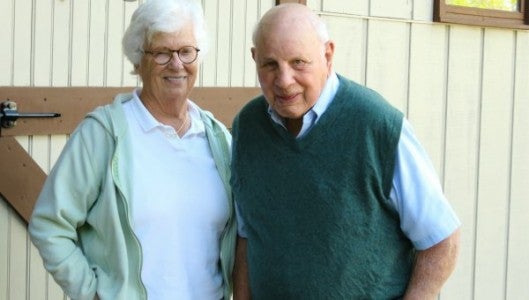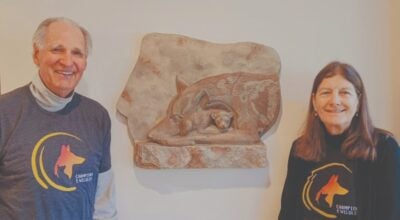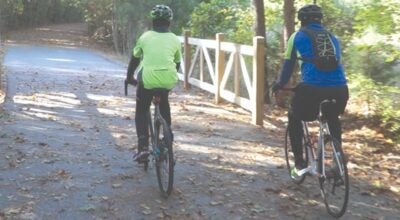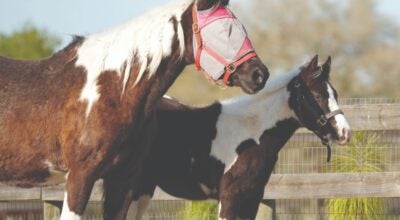The Mahler Family – Leaving a Legacy
Published 8:00 am Sunday, May 1, 2016
Written by Judy Heinrich, photos submitted
In the re-telling of Tryon’s nearly 100-year history as Horse Country, a few names tend to dominate: Entrepreneur Carter Brown. Trainers J. Arthur Reynolds and Gordon Wright. Olympian and all-around legend George Morris. The impact these individuals and others made on Tryon has been long remembered even though, in some cases, their time here was relatively short.
In contrast, there is another name whose bearers were involved in those early days and still are today. They’ve been quietly contributing to our equestrian heritage and broader community the whole time, over 80-plus years and two generations. The Ernst Mahler family has never sought recognition but they certainly deserve it.
On May 7 the 70th Block House Steeplechase will be presented in their honor. That is especially fitting since, without the Mahlers, the Block House might have ended its run more than a quarter century ago.
The Mahler Family
Family patriarch Ernst Mahler was born in Vienna, Austria, in 1887. In 1912 he graduated with distinction from the Technical University in Darmstadt, Germany, having studied industrial chemistry, cellulose and the science of papermaking. He immigrated to the United States in 1914 to work for Kimberly-Clark Corporation in Neenah, Wisconsin, became a naturalized U.S. citizen in 1917, and married Carol Lyon of Minneapolis in 1918.
Having established the first research and development department at Kimberly-Clark, Ernst introduced and patented cellulose cotton wadding, which became one of the company’s most important materials. It was first used for surgical bandages during World War I and later for personal hygiene products (including the trademarked brands Kleenex and Kotex), which created a multi-billion dollar global industry. Ernst continued as a leader of Kimberly-Clark until his retirement in 1952, receiving numerous industry honors throughout his career.
Family of Equestrians
Ernst had first gotten involved with horses in the Austrian Cavalry and was a dedicated horseman for the rest of his life. Ernst, Carol and children Pauline (Polly) and Ernst Jr. (Pete) all enjoyed riding at their farm outside Neenah.
The family first came to Tryon in 1935 as guests at J.C. Kimberly’s house on Wilderness Road, on their way back to Wisconsin from Florida. Ernst ventured out on a rainy day and “did some poking around,” Pete recalls. He discovered a sign over Missildine Pharmacy in Tryon saying, “See Tryon, See C.J. Lynch.” This was Charlie Lynch, the town’s only real estate agent and one of the leaders of Tryon Riding & Hunt Club. Charlie showed Ernst some available properties and by the time he got home Ernst had bought 140 acres. It was the start of Chinquapin Farm on Hunting Country Road, which ultimately grew to 700 acres.
For the Mahlers’ Chinquapin home, Carter Brown built one of his famous creations. “He would just go out and find old log cabins and figure out how to put them together and then basically say, ‘Here’s your house,’” says Pete. “There was never any initial design or anything.”
In Tryon, Ernst foxhunted and showed at Harmon Field with Pete and Polly, while Carol rode and drove for pleasure. When the Chinquapin stable was completed, noted trainer George Webster came down from Neenah to manage it.
Pete and Polly successfully showed the family’s horses, with Pete qualifying for the Maclay Finals on General Alarm. Three Mahler horses went to the U.S. Equestrian Team and another, Silverminer, made history by winning the Hunter Championships at the four biggest shows on the East Coast in one year – New York, Harrisburg, Washington, D.C., and Toronto.
As well as riding, Ernst became a leader in the area’s equestrian organizations. He was on the board of Tryon Riding & Hunt Club and he and George Webster were Joint Masters of the Foxhounds for Tryon Hounds. He was also instrumental in organizing and raising money to bring the USET’s Olympic Trials to the Cotton Patch in the 1950s, and served as vice president of the American Horse Show Association US Olympic Equestrian Team.
Following Ernst’s death in 1967, the family continued their support of the general Tryon community and its equestrian activities, including riding programs for young people and as founding members of the Foothills Equestrian Trail Association. FETA developed miles of equestrian trails across private lands throughout Hunting Country, including many through Chinquapin Farm. The FETA system continues to grow today and has been the model for trail systems in the Collinsville, Fairview, Caroland and Gowensville areas.
A Home for the Block House
It was in the early 1980s that the Mahlers committed to a project that was initially about saving one Tryon institution but ultimately led to the founding of another, even more important one.
The annual Block House Steeplechase, which had been introduced by Carter Brown and the Tryon Riding & Hunt Club in 1947, was in danger of losing its racecourse as the Block House property changed hands. To ensure the steeplechase’s future, a committee of five TR&HC leaders organized with the goal of finding a permanent home for the races and for the club’s other horse events, which were outgrowing Harmon Field.
Led by TR&HC president Gus Hoffman, the group included Dave Kirby, Paul Culberson, Tom Moore and Jim Flack. Without much money to buy property, their strategy was to see if any landowners would be willing to donate some acreage. They approached Pete to see if he’d discuss the idea with his mother, who had been Ernst’s successor upon his death.
Mrs. Mahler agreed to donate 117 acres of Chinquapin Farm to host the steeplechase and create the Foothills Equestrian Nature Center, or FENCE, a place not just for equestrian sports but also for the entire community to enjoy.
“The idea was that it should become a place of nature that anyone in Polk County could call home,” Pete says today,” a place where they could ride their horses, explore nature trails, walk their dogs and learn about nature.”
Along with the gift of land, Mrs. Mahler included stipulations to ensure that FENCE would meet those broader goals. It was agreed that FENCE would be a 501c3 charitable organization; that it would include a nature side to educate children both at FENCE and in the schools; that it would offer summer camps and ongoing educational and entertainment programs; and that the land would be protected in perpetuity, never to be developed.
The 117 acres the Mahlers donated became the site of the steeplechase course and horse show grounds. FENCE’s Sandlin Track, named for its builder, measures eight furlongs (just over a mile) and features rolling hills that give spectators a sweeping view of the horses as they gallop over the fences. Having won multiple races there, jockey Richard Boucher has described Sandlin as “a real steeplechase course, not just a flat track with some speed bumps. This is what steeplechasing is all about.”
Since their original gift, the Mahler family and others have funded additions to the FENCE property so that it now encompasses 384 acres. That includes the former Kimberly estate across Hunting Country Road, with the house becoming home to FENCE’s Nature Center, offices and event space. Also located on the Nature Center side are walking and riding trails, a pond, a cross-country course, and the home of Therapeutic Riding of Tryon (TROT). All of FENCE’s land is protected by permanent conservation easements with the Pacolet Area Conservancy.
Pete says that most of the additions to FENCE have been made through public generosity, with some major donations and many small ones. Public contributions paid for a fence around the outside of the steeplechase track and funded the building of the Metcalf Barns above the track. Many of FENCE’s ongoing programs – like Go Fly a Kite, Armchair Travelers, nature education and other family events – have been funded by bequests, notably by the Dave Kirby family, as well as smaller contributions.
The Mahler family continues their support of FENCE and many other ventures important to the Polk County area, led by Pete and his wife, Nancy, with the support of their two sons, a daughter and seven grandchildren.
Pete and Nancy still call Chinquapin Farm home, although not in the original Carter Brown house (which has been lovingly tended by the Walker family for several years).
As for the future of the family’s most generous gift to the county, Pete says he’s happy to see FENCE healthy and well-used. “They have an outstanding board and manager, doing a wonderful job. The horse show side is staying booked up and they’re also very strong on the nature side, with the trails cleaned out and pristine.”
As proud as Pete is of FENCE’s ongoing use, he’s prouder still of the story behind it. “All of the things that people have done for FENCE were done with no idea of any money coming back to them, nobody making a profit – it has all been completely philanthropic,” says Pete. “Above everything else, FENCE is for the community. We want to see it continuing to operate with the community in mind.”
Considering the affection that the community – equestrian and otherwise – has for this gem in our midst, it should be safe to say that its future is secure. Let’s all make it so.






